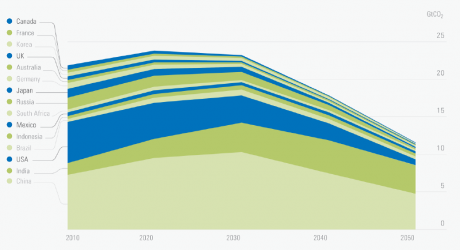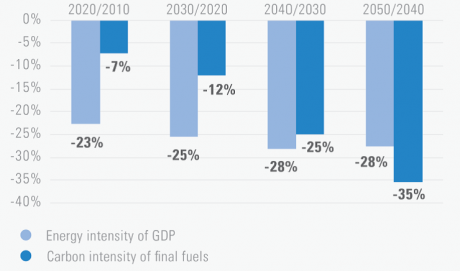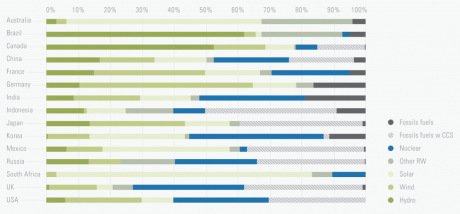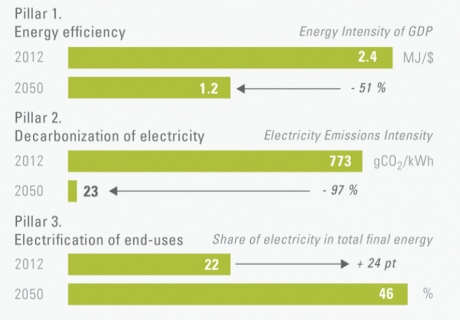Pathways to a climate-contained, affluent 2050
A multi-country group of researchers led by leading development economist Jeffrey Sachs, has released a report aimed at showing that it is still possible to contain global warming to 2 degrees, while tripling economic output.
The report provides individual national pathways for decarbonising the economies of 15 separate countries, including Australia, which together account for 70 per cent of global emissions.
The chart below summarises the emissions trajectory for these nations. It allows for emissions to initially grow in lesser developed countries such as China, India, Brazil and Indonesia given their inadequate access to many things we consider essentials of life; while emissions immediately decline in wealthy countries such as Australia and the United States.
Figure 1: Annual emissions over time for 15 major emitter nations (CLICK TO ENLARGE)
The report outlines three pillars through which emissions are brought down while economic wealth continues to grow:
– More efficient use of energy
– Lowered carbon intensity of that energy
– Electrification of energy use because electricity is cheaper to decarbonise than liquid or gaseous fuels and also enables greater energy-efficiency.
As the chart below details, over the first two decades decoupling economic growth from use of energy plays the most important part, with reduced carbon intensity of fuels more important in the latter two decades.
Key to this result is almost completely decarbonising electricity supply, and then increasing its share of final energy usage from about 20 per cent to more than 35 per cent at the expense of direct use of oil in transport and gas for heating purposes.

It’s interesting that when you break down how electricity is decarbonised by country you end up with vastly different results, reflecting the different natural endowments of those nations. Australian researchers, drawn mainly from ClimateWorks and the CSIRO, see solar dominating as part of a cost-effective response while CCS and nuclear are not drawn upon at all. South Africa is similar but they do make use of nuclear, which is already an established source of electricity in that country. In the US and UK, however, nuclear and CCS play a vital role, perhaps partly reflecting their much higher population densities and lower quality solar resources.
Figure 4: Electricity generation mix in 2050
Delving into Australia’s specific decarbonisation pathway, they have found a mix of technically feasible technologies that result in annual emissions in 2050 from energy use 70 per cent lower in 2050 than today. Meanwhile, GDP per capita still manages to rise from $66,000 in 2012 to $103,000 in 2050.
The chart below outlines the components behind the improvement with energy intensity cut in half, while the carbon intensity of electricity plummets and electricity makes up nearly half of final energy use.




















